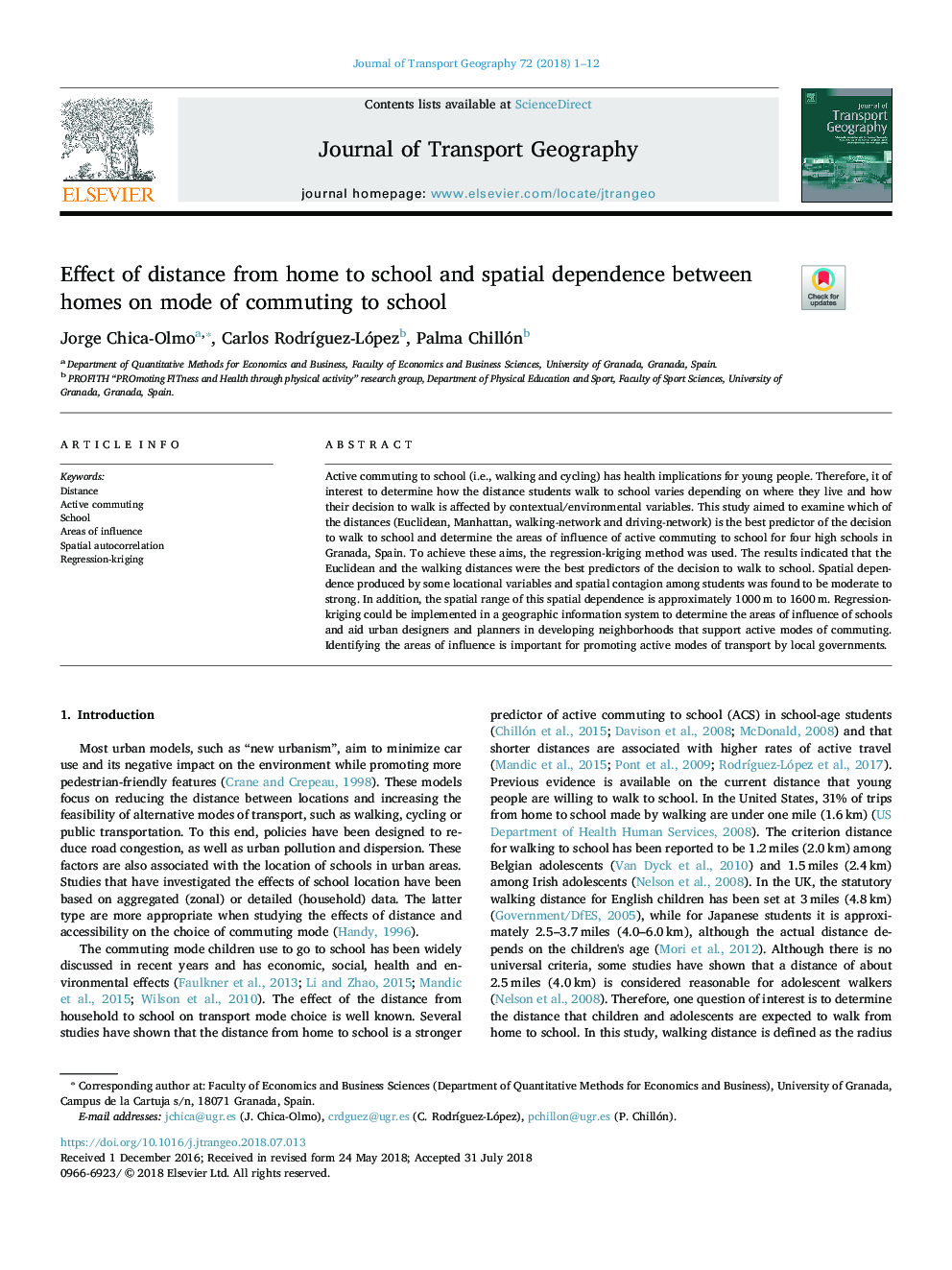| Article ID | Journal | Published Year | Pages | File Type |
|---|---|---|---|---|
| 7484939 | Journal of Transport Geography | 2018 | 12 Pages |
Abstract
Active commuting to school (i.e., walking and cycling) has health implications for young people. Therefore, it of interest to determine how the distance students walk to school varies depending on where they live and how their decision to walk is affected by contextual/environmental variables. This study aimed to examine which of the distances (Euclidean, Manhattan, walking-network and driving-network) is the best predictor of the decision to walk to school and determine the areas of influence of active commuting to school for four high schools in Granada, Spain. To achieve these aims, the regression-kriging method was used. The results indicated that the Euclidean and the walking distances were the best predictors of the decision to walk to school. Spatial dependence produced by some locational variables and spatial contagion among students was found to be moderate to strong. In addition, the spatial range of this spatial dependence is approximately 1000â¯m to 1600â¯m. Regression-kriging could be implemented in a geographic information system to determine the areas of influence of schools and aid urban designers and planners in developing neighborhoods that support active modes of commuting. Identifying the areas of influence is important for promoting active modes of transport by local governments.
Related Topics
Life Sciences
Environmental Science
Environmental Science (General)
Authors
Jorge Chica-Olmo, Carlos RodrÃguez-López, Palma Chillón,
